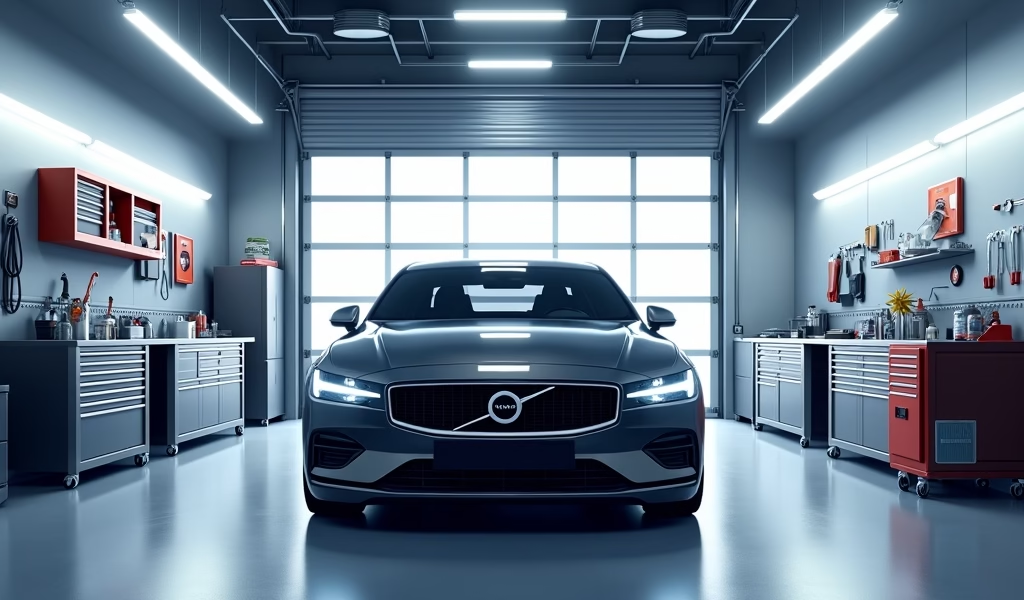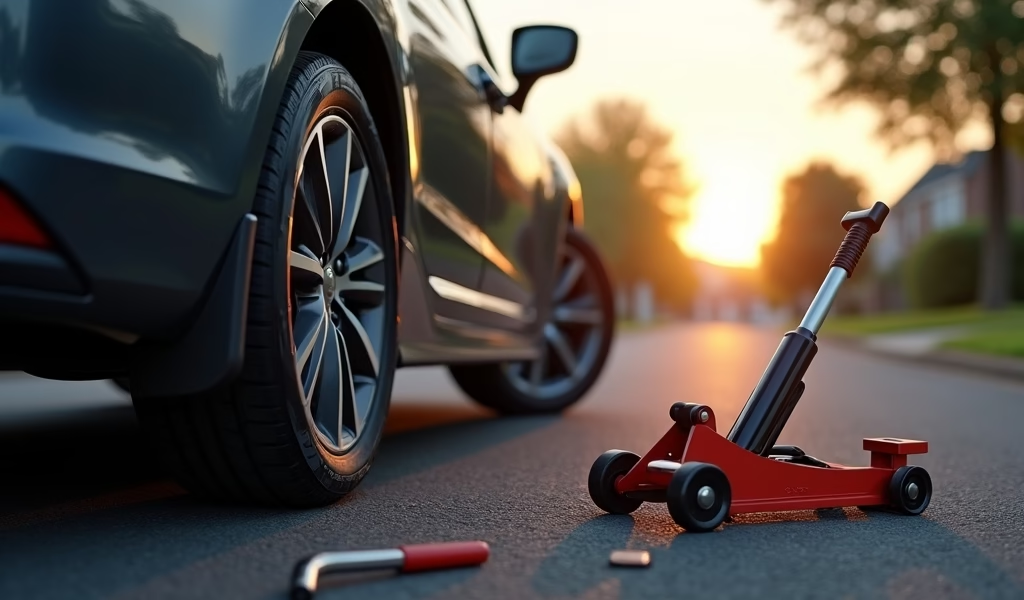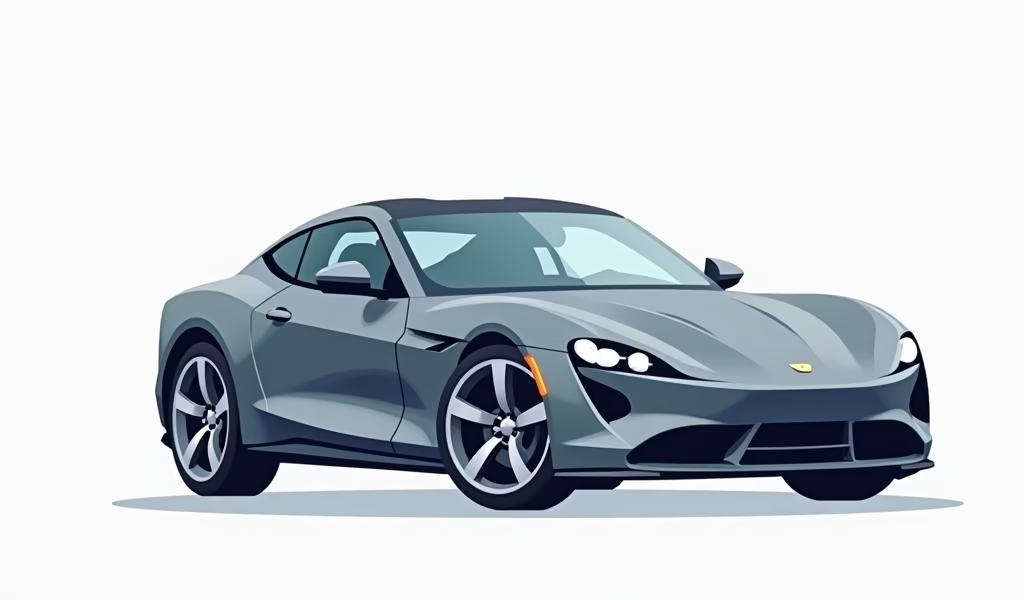Overview
This article explores how mobile car shopping apps have revolutionized the vehicle buying experience by providing tools that offer price comparisons, vehicle histories, and negotiation leverage that can save buyers thousands of dollars. It highlights the top car shopping applications, essential app features to look for, common online car shopping pitfalls to avoid, and practical DIY maintenance tips for new car owners.
Table of Contents
- Revolutionizing Car Shopping: Why Mobile Apps Are Changing the Game
- The Top Car Shopping Apps That Will Save You Time and Money
- 5 DIY Car Care Hacks Every New Car Owner Should Know
- How Car Shopping Apps Can Help You Save Thousands
- Essential Features to Look for in a Car Shopping App
- Avoiding Common Pitfalls When Shopping for Cars Online
- Conclusion: The Future of Car Buying Is in Your Pocket
- Frequently Asked Questions
Revolutionizing Car Shopping: Why Mobile Apps Are Changing the Game
Remember when buying a car meant spending your entire Saturday hopping from dealership to dealership, armed with nothing but newspaper clippings and a prayer? Those days are as outdated as cassette players and manual windows. Today, the best car shopping app can transform that exhausting ordeal into something you can do while waiting for your morning coffee to brew.
As a mechanic who’s seen countless folks drive off in lemons they could have avoided, I can’t help but marvel at how technology has revolutionized car buying. These pocket-sized powerhouses give you the ability to compare thousands of vehicles, check their histories, and even negotiate prices—all before you’ve put on your shoes to leave the house.
Think of car shopping apps as having a trusted mechanic, a savvy negotiator, and a car historian all rolled into one sleek interface. They’re like having X-ray vision for vehicles, letting you see beyond the shiny exterior to what really matters under the hood.
But not all car shopping apps are created equal. Some are as useful as a screen door on a submarine, while others can genuinely save you thousands and steer you toward a vehicle that won’t become your garage’s permanent resident. Let’s pop the hood and examine what makes the best ones worth your download.
The Top Car Shopping Apps That Will Save You Time and Money
If apps were cars, these would be the luxury models with all the bells and whistles. Here are my top picks for apps that make car buying less of a headache and more of a victory lap:
- CarGurus: Like having a bloodhound that sniffs out deals others miss. Their deal ratings are as straightforward as a socket wrench—”Great,” “Good,” “Fair,” or “Overpriced.”
- Autotrader: The Swiss Army knife of car shopping apps. Its filtering options let you narrow down choices more precisely than a micrometer.
- Cars.com: User-friendly interface that even your technology-averse uncle could navigate. Their match feature works like a dating app, but for you and your future vehicle.
- TrueCar: Transparency is their game. Shows what others paid for similar models, giving you negotiating power that would make even seasoned car salespeople sweat.
- Edmunds: Their “True Cost to Own” calculator is like peering into the future of your finances. Reveals hidden costs that many buyers only discover after signing on the dotted line.
Each of these apps brings something unique to the table. CarGurus might help you find the best deal on a Ford F-150, while Edmunds could show you that the seemingly affordable luxury sedan will cost you an arm and a leg in maintenance over five years. It’s like having different specialized tools in your toolbox—each has its purpose.
According to a ComScore study, over 68% of car shoppers now use their mobile devices during the buying process. That’s not just a trend; it’s a complete overhaul of how we approach one of life’s major purchases.

5 DIY Car Care Hacks Every New Car Owner Should Know
So you’ve used one of these stellar apps to score your dream ride. Congratulations! Now comes the part many overlook: keeping that vehicle running like a well-oiled machine. Here are five DIY care hacks that will extend your car’s life without requiring an engineering degree:
1. The Toothpaste Touch-Up Trick
That tiny scratch mocking you from your car’s otherwise perfect finish? Before rushing to a body shop, try a dab of plain white toothpaste (not gel). Work it into the scratch with a soft cloth using gentle circular motions. The mild abrasives in toothpaste work like ultra-fine sandpaper, often buffing out surface scratches. It’s like giving your car a mini facial—refreshing and surprisingly effective.
2. The Coffee Filter Dashboard Dusting
Dashboards collect dust like savings accounts collect interest—slowly but surely. Coffee filters, with their lint-free composition, are perfect for dusting dashboards without leaving fibers behind. They’re gentle enough not to scratch yet sturdy enough to get the job done. Plus, they cost pennies compared to specialized cleaning cloths.
3. The Unexpected Battery Terminal Cleaner
Corrosion on battery terminals can leave you stranded faster than you can say “jump start.” Mix a tablespoon of baking soda with a cup of water, disconnect your battery (negative terminal first!), and apply this homemade solution with an old toothbrush. It’ll fizz like a science experiment as it neutralizes the acid. Rinse, dry thoroughly, and reconnect. Your electrical system will thank you with reliable starts.
4. The Plunger Dent Remover
Minor dents happen to the best of us—shopping carts, careless door openings, hailstorms with an attitude. For small, accessible dents in metal panels, a regular bathroom plunger can work wonders. Splash some water on both the plunger and the dent, position the plunger over the dent, and pull. Sometimes, that satisfying “pop” as the metal returns to position is sweeter than any engine purr.
5. The WD-40 Windshield Wonder
Those stubborn bug splatters that your wipers just smear around? A light spray of WD-40 on a cloth (never directly on the glass) can dissolve them away. Just be sure to wash it off thoroughly with soap and water afterward so it doesn’t streak when your wipers run. This same trick works on tree sap and bird droppings that seem permanently bonded to your paint.
These hacks aren’t just about saving money—though they certainly do that. They’re about developing a relationship with your vehicle, understanding its needs, and addressing small issues before they become expensive problems. It’s preventative maintenance that any car buying guide worth its salt would recommend.
How Car Shopping Apps Can Help You Save Thousands
Let’s talk dollars and sense. The average new car price has climbed to over $47,000 according to Kelley Blue Book. Used cars aren’t far behind in their price surge. That’s why having digital tools that level the playing field isn’t just convenient—it’s economically essential.
Car shopping apps save you money in ways that aren’t always obvious at first glance:
- Price transparency across multiple dealerships exposes outliers trying to charge premium prices for average vehicles
- History reports flag previous damage that might justify a lower price or signal you to walk away
- Depreciation calculators show which models hold their value better, saving you on the back end when it’s time to sell
- Finance calculators reveal the true cost of loans, helping you avoid dealership financing traps
- Timing tools alert you to seasonal price drops and manufacturer incentives
One of my customers recently saved over $4,200 using TrueCar’s price comparison feature. He walked into the dealership with data showing exactly what others in the area had paid for the same model. The sales manager tried the usual song and dance, but my customer simply showed his screen and said, “This is the fair market price.” Game over.
Another client used CarGurus to find a vehicle that had been sitting on a lot for over 90 days. The algorithm flagged it as a potential deal, and she used that information to negotiate an additional discount. The dealership was eager to move aging inventory, and she drove away in a practically new SUV for $3,800 under market value.
When buying a car online, information isn’t just power—it’s currency. Every piece of data you gather through these apps is potentially money staying in your pocket rather than padding a dealer’s commission.
Essential Features to Look for in a Car Shopping App
Not all car shopping apps deserve the precious real estate on your phone. Here’s what separates the tools from the toys when it comes to must-have features:
- Comprehensive Search Filters: Basic year/make/model searches don’t cut it anymore. Look for apps that let you filter by specific features like adaptive cruise control, third-row seating, or towing capacity.
- Price Analysis Tools: The app should tell you if a price is fair based on market data, not just list what the seller wants.
- Vehicle History Integration: CARFAX or AutoCheck reports accessible within the app prevent the nasty surprises that come from buying blindly.
- Payment Calculator: Realistic monthly payment estimates that include taxes, fees, and insurance costs show the true picture of affordability.
- Dealer Reputation Ratings: Previous buyers’ experiences can alert you to dealerships known for bait-and-switch tactics or poor service.
- Notification Systems: Alerts for price drops or when new vehicles matching your criteria hit the market give you first-mover advantage.
The most powerful feature, however, is cross-platform integration. The best car shopping app should sync seamlessly between your phone and computer, saving favorites and searches as you switch devices. Car shopping rarely happens in one sitting, and your research shouldn’t restart every time you pick up a different device.
Think of these features like the safety systems in a modern vehicle—you might not appreciate their importance until the moment they save you from disaster. A good car shopping app doesn’t just show you cars; it protects your financial well-being throughout the buying process.

Avoiding Common Pitfalls When Shopping for Cars Online
Even with the best digital tools at your fingertips, car shopping still has its hazards. Here are the potholes to avoid on your journey to vehicle ownership:
The “Too Good To Be True” Listing
That immaculate 3-year-old luxury sedan priced 40% below market value? It’s like a check engine light for your skepticism—it should be flashing bright red. Scammers count on your excitement overriding your common sense. Always verify the seller’s reputation, insist on comprehensive photos, and never, ever send money before seeing the vehicle in person.
The Phantom Vehicle
Some dealerships list vehicles they don’t actually have, hoping to get you in the door where they can switch you to something else. Before making the trip, call and confirm the exact car is still available, get the VIN, and ask for recent photos. A legitimate seller won’t hesitate to provide this information.
The Hidden History
Not all vehicle history reports are created equal, and not all damage gets reported. Use the app’s history report as a starting point, not the final word. Have an independent mechanic inspect any used vehicle before purchase—it’s the automotive equivalent of a home inspection, and just as important.
The Focus on Monthly Payments
Dealers love to ask, “What monthly payment works for your budget?” This shifts attention away from the vehicle’s actual price and onto a number that can be manipulated through loan terms. Keep the conversation centered on the out-the-door price. The monthly payment is just math after that.
The Overlooked Ownership Costs
That European luxury car might fit your budget today, but what about when it needs specialized service? Apps with ownership cost calculators show you the bigger picture beyond the purchase price. Fuel efficiency, insurance premiums, maintenance schedules, and parts availability all factor into the true cost of ownership.
The most dangerous pitfall, though, is emotional buying. Cars have an uncanny ability to trigger impulse decisions—that new car smell is practically engineered to shut down the rational part of your brain. The best defense is a deliberate approach: create your shortlist through the app, schedule test drives for multiple vehicles, and sleep on the decision before signing anything.
Conclusion: The Future of Car Buying Is in Your Pocket
The days of walking onto a car lot uninformed and at the mercy of a salesperson’s pitch are firmly in the rearview mirror. Today’s best car shopping apps put unprecedented power in consumers’ hands, transforming what was once an anxiety-inducing experience into something almost enjoyable.
These digital tools don’t just make car buying easier—they fundamentally change the relationship between buyers and sellers. When you walk into a dealership armed with market data, vehicle histories, and fair price information, you’re no longer just a customer; you’re a knowledgeable participant in a more transparent transaction.
Combine these powerful apps with the DIY car care hacks we’ve explored, and you’ve got a formula for not just buying smarter but maintaining that investment for years to come. The best vehicle ownership experience comes from making informed decisions from research through maintenance.
Remember that technology is just a tool—it’s how you use it that matters. Take your time, do your homework, and let these apps be your guide rather than making impulse decisions. Your wallet, your future self, and that gleaming vehicle in your driveway will thank you.
Now, isn’t it time you downloaded a car shopping app and took it for a test drive? The perfect vehicle for your needs and budget might be just a few taps away.
Frequently Asked Questions
Which car shopping app is completely free to use?
Most major car shopping apps like CarGurus, Autotrader, and Cars.com offer free basic versions with full search functionality. Premium features like instant alerts or unlimited history reports may require subscription fees.
Can I buy a car directly through these apps?
Some apps like Carvana and Vroom offer complete online purchasing with delivery. Most traditional car shopping apps connect you with dealers or private sellers to complete the transaction.
How accurate are the price estimates on car shopping apps?
Price estimates are generally reliable as they’re based on actual market data of similar vehicles sold in your area. Remember they’re estimates, not guarantees, and local market conditions can cause variations.
Do car shopping apps work for buying cars from private sellers?
Yes, apps like Facebook Marketplace and Craigslist are specifically designed for private party transactions. Others like CarGurus also include private listings alongside dealer inventory.
How often are listings updated on car shopping apps?
Most reputable apps update their inventory at least daily, with many refreshing multiple times throughout the day. Set up notifications for the most up-to-date listings of cars matching your criteria.

